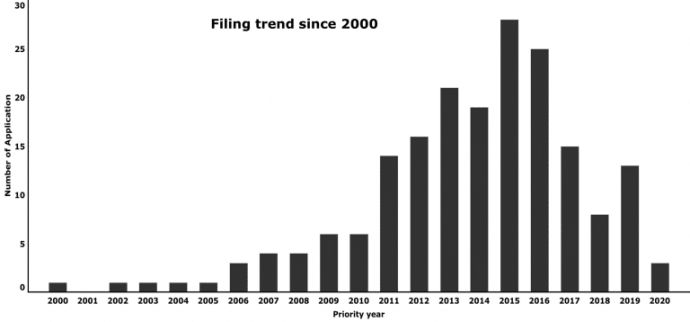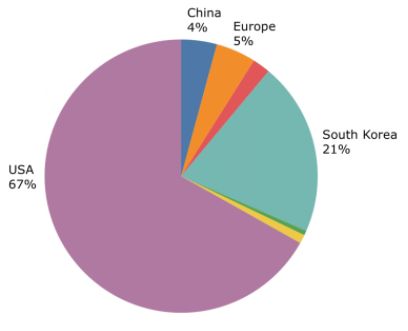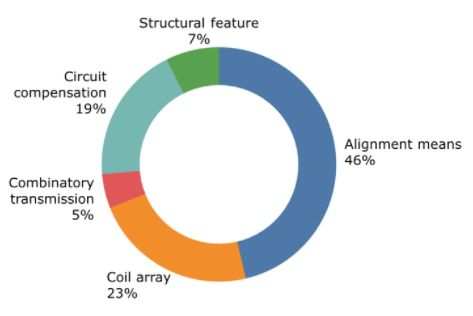Wireless charging electrically transfers power from a power source to a receiving device without any wired connection, and improves the convenience and reliability of charging smartphones, computing devices and Internet of Things (IoT) devices.
Several countries have initiatives in place pushing for adoption of clean and green energy alternatives, which in turn have increased the demand for electric vehicles and wireless charging technologies. On the healthcare front, wireless charging incentivises development of medical devices that are embedded within a patient as a mechanism to avoid follow up surgery.
The wireless charging market was valued at $7billion in 2020. Estimates by market research groups predict that this market will reach $25 – $60billion by 2026, growing at a compounds annual growth rate of about 26% – 40% during this period.
Technology
The wireless charging market can be broadly characterised into three main technology groups: inductive charging, resonant inductive charging and radio frequency based charging. While inductive charging currently commands the largest segment of the market, resonant inductive charging in particular is gaining traction.
In inductive charging, an alternating magnetic field generated in a transmitting coil is used to electromagnetically induce electricity in a receiving coil. Resonant charging, or magnetic resonance charging, is an extended form of inductive charging and relies on resonant coils to provide magnetic resonance between a transmitting coil and a receiving coil. Resonant charging has advantages in that power is transmissible at a relatively great distance, there is a certain degree of freedom with respect to an alignment between the coils, and multiple devices can charge simultaneously. These benefits serve to improve convenience and create a better experience for end users.
Challenges and Opportunities
While resonant inductive charging allows power transmission at longer distances, the transmission efficiency is dependent on the magnetic resonance coupling. This is commonly provided by a coupling coefficient, which is typically in the range of 5% to 30% depending on the distance, alignment, and size of the coils.
It appears that opportunities are present in methods and systems for increasing efficiency of power transfer in resonant inductive charging.
Patent Landscape: Improving Power Transfer Efficiency through Alignment

To explore the emerging trend and opportunities in the resonant inductive charging space relating to alignment for improving power transfer efficiency, a patent landscape search was performed. The patent landscape search revealed 191 patent families in this technology area, in the period since 2000. The trend peaks in 2015 and tapers off in recent years. It should be noted that this trend only reflects the development of related technologies in this alignment space and that the resonant inductive charging patent landscape is currently experiencing exponential growth (about 11,000 patent families in 2020; data not shown).

In relation to resonant inductive charging we identified that 67% of the patent families originate from the USA. Major filers include Qualcomm Inc., Witricity Corporation, Boston Scientific Neuromodulation Corporation and Momentum Dynamics. South Korea accounts for 21% of these patent filings, with major filers comprising LG Electronics Inc., LG Innoteck Co Ltd and Samsung Electronics Co Ltd.

Improving power transmission efficiency through alignment can be broadly classified into five main groupings:
- Alignment means account for 46% of the total filings. This group includes the use of magnets, sensors, alignment structures and manual means to position the transmission coil in proximity to the receiving coil.
- Coil arrays account for 23% of the total filings. This group includes forming an array of transmission coils and/or receiving coils to ensure that the magnetic fields overlap and couple to each other.
- Circuit compensation accounts for 19% of the total filings. This group includes modulating circuit parameters such as current, voltage, frequency and impedance to increase the coupling coefficient.
- Addition of structural features account for 7% of the total filings. This group includes exploring different coil designs, magnetic field reflectors and filters, and resonators to focus and/or extend the magnetic fields to improve coupling.
- Combinatory approaches account for 5% of the total filings. This group includes combining resonant charging with other forms of wireless charging and/or wired charging to address the magnetic coupling issue by switching to an alternative form of charging when resonant charging is not favoured.
Outlook
This review highlights some approaches taken by the industry to improve power transmission in resonant inductive charging. This said, it should be noted that resonant inductive charging is already available in the market. An example is Qualcomm Halo's wireless electric vehicle charging (WEVC) technology, which uses magnetic resonance and alignment sensors to couple power from an external source to a vehicle charging system. This technology has been adopted in the Mercedes Benz S class sedan model S550e.
The Qualcomm Halo's WEVC technology (and its patent portfolio) was acquired by WiTricity in 2019, which is itself developing wireless charging solutions for electric grids in smart cities and vehicles. WiTricity has also licensed their technology to a large number of companies in the consumer electronics and medical devices spaces.
It is clear that this technology space will continue to be shaped by agreements, partnerships, mergers and acquisitions between smartphone, automotive manufacturers and other stakeholders.
As the wireless charging market grows and moves towards a commonly acceptable standard for global interoperability, it will be interesting to see how this technology develops.
The content of this article is intended to provide a general guide to the subject matter. Specialist advice should be sought about your specific circumstances.


